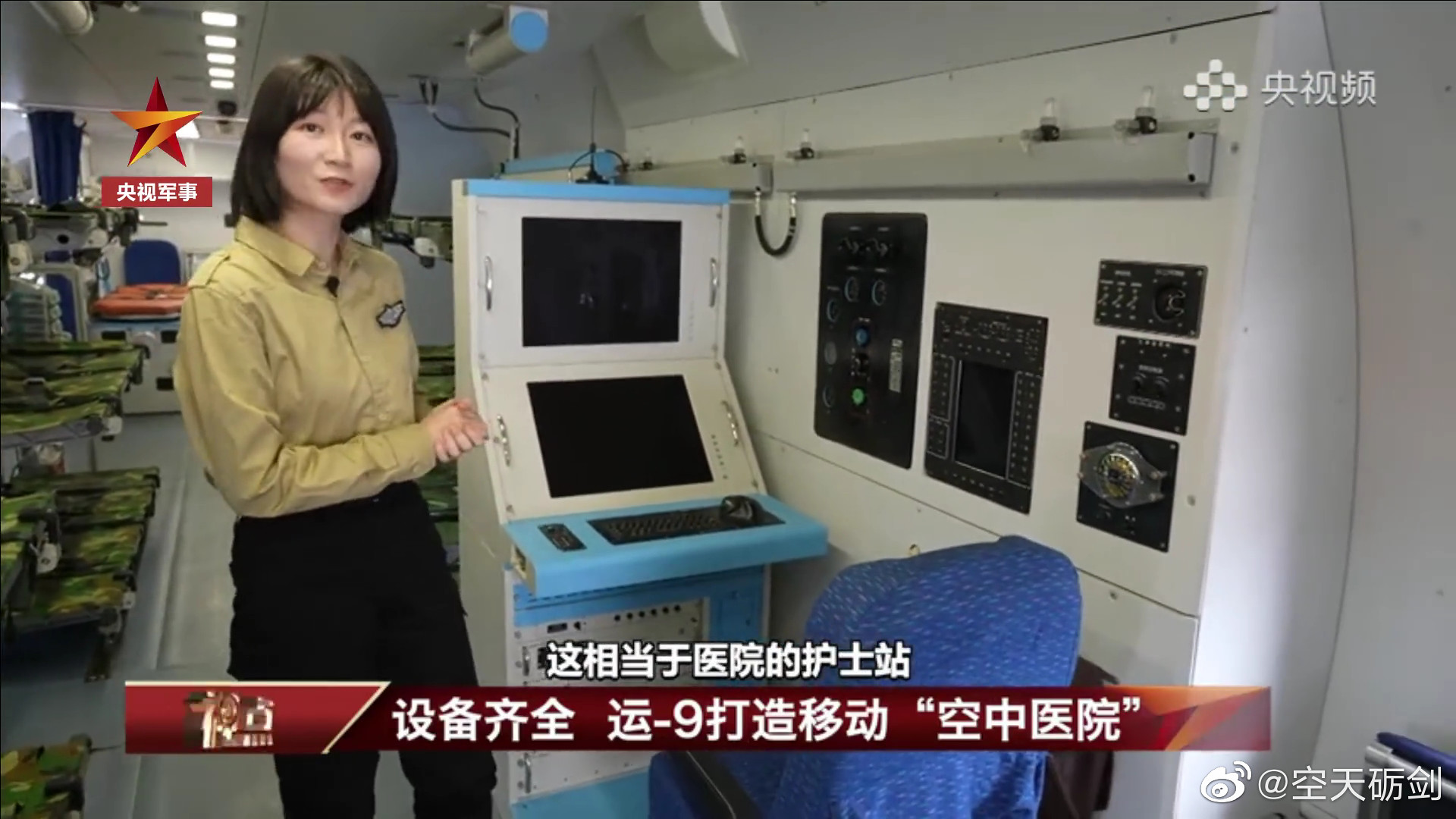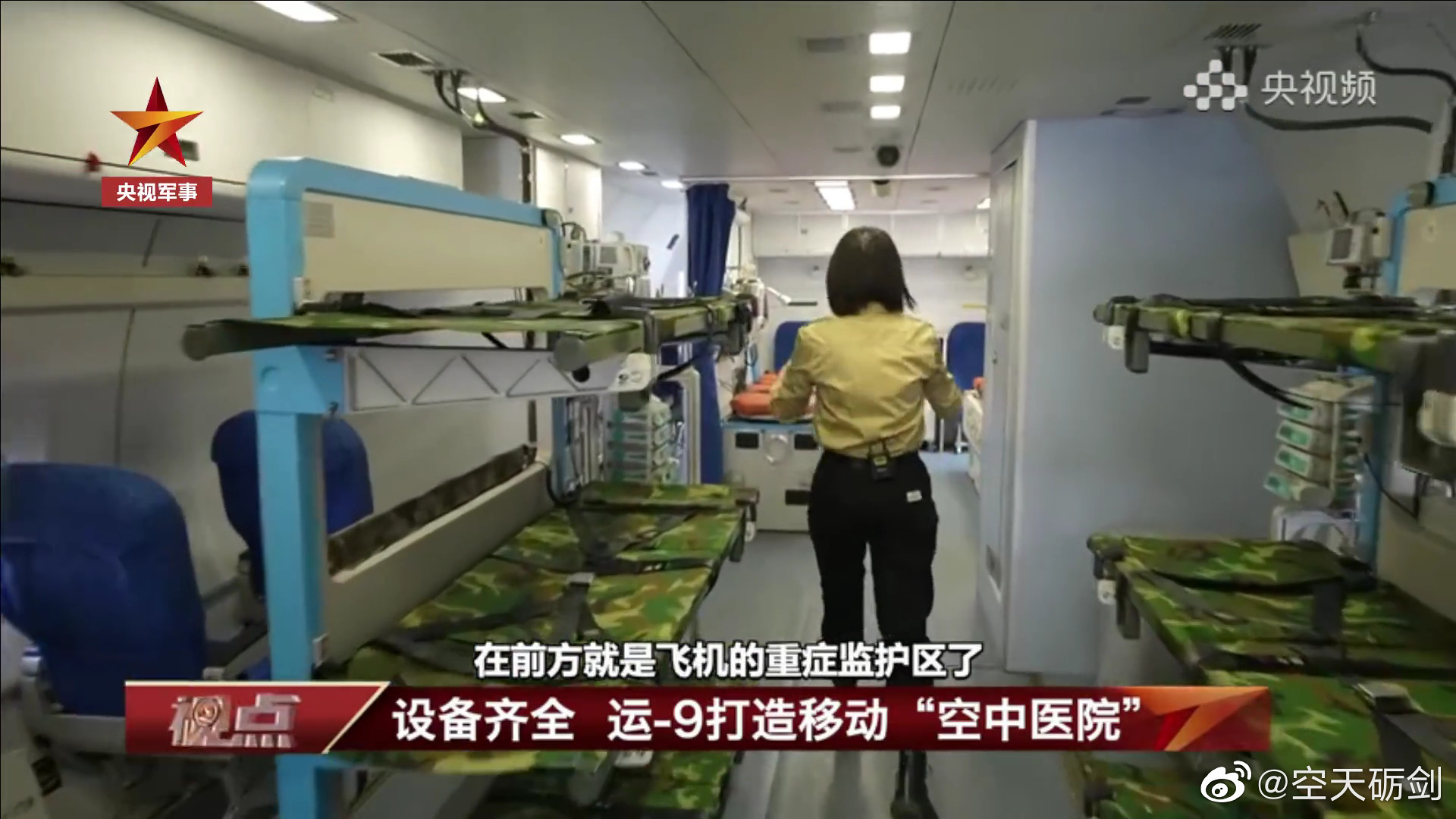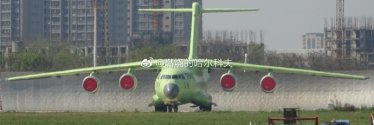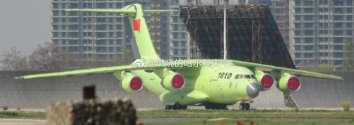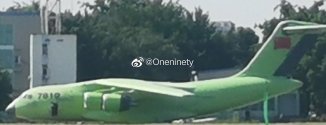You are using an out of date browser. It may not display this or other websites correctly.
You should upgrade or use an alternative browser.
You should upgrade or use an alternative browser.
China's transport, tanker & heavy lift aircraft - esp. Y-20/YY-20
- Thread starter Totoro
- Start date
I think clamshells are reserved for low-bypass while cold streams are high-bypass only.Clamshell type reversers typically are featured on engines that are narrower. The WS-20s seem to have a bit more girth to use clamshells.
Just saying from my perspective as a pilot, I can't imagine a plane (regardless of whether its a prototype or not) that doesn't have any sort of reversers. Even if I'm planning on using idle reverse on the longest runway and a headwind that'll guarantee minimal landing distance, my fingers are literally on the reverse levers as soon as the mains touch the tarmac. Both types I've flown (Dash-8 and the A320) have two audible calls to make sure reversers are selected/working as part of our standard operating procedures.
Some photos, leaked last month but I didn't see anyone posted them here.
View attachment 74589
View attachment 74588
View attachment 74587
What about just going a few pages back?
China's transport, tanker & heavy lift aircraft - esp. Y-20/YY-20
Does anyone know it is Y20 or Ilyushin Il-76? This plane and others 16 jet fighter J-11 have been trespass my beloved country, Malaysia FIR yesterday.:mad: ohh nooo! you are gonna make all of us cry.
www.sinodefenceforum.com
China's transport, tanker & heavy lift aircraft - esp. Y-20/YY-20
A vertical-stabilizer perspective:
www.sinodefenceforum.com
Aaah~ I just didn't see the post.What about just going a few pages back?...seems you are late by more than a month
China's transport, tanker & heavy lift aircraft - esp. Y-20/YY-20
Does anyone know it is Y20 or Ilyushin Il-76? This plane and others 16 jet fighter J-11 have been trespass my beloved country, Malaysia FIR yesterday.:mad: ohh nooo! you are gonna make all of us cry.www.sinodefenceforum.comChina's transport, tanker & heavy lift aircraft - esp. Y-20/YY-20
A vertical-stabilizer perspective:www.sinodefenceforum.com
Occasionally my browser woupd fail to load the pictures in this site...
New China designed engines to replace the Russian engines with longer range and heavier lift?Some photos, leaked last month but I didn't see anyone posted them here.
View attachment 74589
View attachment 74588
View attachment 74587
Yes.New China designed engines to replace the Russian engines with longer range and heavier lift?
Single WS-20 engine had been seen to be installed on an Il-76 test plane two or three years before. So this time with four engine installed on Y-20, the WS-20 should be operating capable now.
WS-20 said to be with a thrust of 120 to 140kN, or even 140-160kN, but detail is still unknown.
Anyway, it's a domestic production of China, that's important.
A small step forward.
Hendrik_2000
Lieutenant General
Well turn out this cartoon is from AVIC Weibo account. Well it is good news in slow week ! if it true
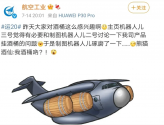
Maker of China's Y-20 large transport plane gives a hint about the aircraft's future engines
By
Published: Jul 19, 2021 02:07 AM
A Y-20 large transport aircraft attached to an aviation division under the PLA Western Theater Command flies at a predetermined altitude during a flight training mission on January 4, 2021. Photo: eng.chinamil.com.cn
China's Y-20 large transport aircraft is expected to switch to domestically developed engines with a high bypass ratio, according to media reports after the aircraft's maker gave a hint in a cartoon.
The official Weibo account of the state-owned Aviation Industry Corporation of China (AVIC), the maker of the Y-20, released last week a cartoon of the Y-20 with four big wine barrels covering its engines.
The wine barrels resemble engines with a high bypass ratio and the cartoon could be a hint that the Y-20 will soon be equipped with this type of engines, eastday.com, a Shanghai-based news website, reported on Friday.
Unverified photos and videos of a Y-20 with serial number 7810 have been circulating on social media since this year. The engines of this particular Y-20, dubbed by military observers as the WS-20, are shorter but have a larger diameter than the current ones in service, meaning they have a higher bypass ratio, the eastday.com report said, noting that the AVIC's Weibo post could be the first confirmation on these speculations.
The bypass ratio on turbofan engines refers to the ratio between the air flow of the bypass stream and the air flow entering the core. An engine with a high bypass ratio is shorter but with a larger diameter, eastday.com said.
Usually, engines with a high bypass ratio are larger but consume less fuel, making it suitable for long-range transport aircrafts while engines with a low bypass ratio are used on fighter jets, the report said, noting that the Y-20s currently in service are equipped with engines with a medium bypass ratio and their power and fuel efficiency are not optimal.
With the new engines, the Y-20 will get a boost in not only range and endurance, but also in cargo capacity, eastday.com predicted.
In a program aired by China Central Television in November 2020, Chinese military experts also revealed . Song Xinzhi, one of the experts, mentioned that compared with the Russian D-30 engine currently used on the Y-20, the Chinese engine is much larger in diameter and can provide more powerful thrust, uses less fuel, and enables the plane to take off and land in shorter runways.
In the future, the Y-20 will be produced in large numbers using Chinese-developed engines to serve as a platform that can be developed into different variants, like an aerial tanker or an early warning aircraft, Wei Dongxu, a Beijing-based military expert, told the Global Times.

Maker of China's Y-20 large transport plane gives a hint about the aircraft's future engines
By
Published: Jul 19, 2021 02:07 AM
A Y-20 large transport aircraft attached to an aviation division under the PLA Western Theater Command flies at a predetermined altitude during a flight training mission on January 4, 2021. Photo: eng.chinamil.com.cn
China's Y-20 large transport aircraft is expected to switch to domestically developed engines with a high bypass ratio, according to media reports after the aircraft's maker gave a hint in a cartoon.
The official Weibo account of the state-owned Aviation Industry Corporation of China (AVIC), the maker of the Y-20, released last week a cartoon of the Y-20 with four big wine barrels covering its engines.
The wine barrels resemble engines with a high bypass ratio and the cartoon could be a hint that the Y-20 will soon be equipped with this type of engines, eastday.com, a Shanghai-based news website, reported on Friday.
Unverified photos and videos of a Y-20 with serial number 7810 have been circulating on social media since this year. The engines of this particular Y-20, dubbed by military observers as the WS-20, are shorter but have a larger diameter than the current ones in service, meaning they have a higher bypass ratio, the eastday.com report said, noting that the AVIC's Weibo post could be the first confirmation on these speculations.
The bypass ratio on turbofan engines refers to the ratio between the air flow of the bypass stream and the air flow entering the core. An engine with a high bypass ratio is shorter but with a larger diameter, eastday.com said.
Usually, engines with a high bypass ratio are larger but consume less fuel, making it suitable for long-range transport aircrafts while engines with a low bypass ratio are used on fighter jets, the report said, noting that the Y-20s currently in service are equipped with engines with a medium bypass ratio and their power and fuel efficiency are not optimal.
With the new engines, the Y-20 will get a boost in not only range and endurance, but also in cargo capacity, eastday.com predicted.
In a program aired by China Central Television in November 2020, Chinese military experts also revealed . Song Xinzhi, one of the experts, mentioned that compared with the Russian D-30 engine currently used on the Y-20, the Chinese engine is much larger in diameter and can provide more powerful thrust, uses less fuel, and enables the plane to take off and land in shorter runways.
In the future, the Y-20 will be produced in large numbers using Chinese-developed engines to serve as a platform that can be developed into different variants, like an aerial tanker or an early warning aircraft, Wei Dongxu, a Beijing-based military expert, told the Global Times.
Hendrik_2000
Lieutenant General
According to this website China imported 463 D30-KP-2 engine from Russia between 2009 to 2020 Now how many H6K,N produced sofar? say 80-90? Then it need 180 D30 engine
How many Y20 did they produced let's assume 40. So the engine requirement = 160. So total used engine =340 add 81 for spare
So only 42 left for production of say 10 H6K and 8 Y20 . Then they will used up all their engine by the end of the year. Any comment?
China imported the first batch of D-30KP-2 turbofan engines in 2009, the number of which was 55, and all were delivered before 2011.
It is generally believed that these engines may be used for bomber H-6K bombers, each bomber H-6K requires 2 Engines, plus spare engines, these engines can make about 24 H-6K bombers. In 2011, China purchased another 184 D-30KP-2 turbofan engines from Russia. These engines were delivered before 2015. Considering that Y-20 transporter just flew for the first time in 2013, these engines should also be used for H-6K bombers. And as Y-20 got 5 prototypes, and each Y-20 was equipped with 4 engines, plus a total of more than 25 engines. After deducting these engines, the remaining engines could be used to produce about 80 H-6K bombers, estimated by military analyst Xiao Feizhu.
In 2016, China continued to purchase additional D-30KP-2 turbofan engines, and purchased 170 engines for the third time. The delivery plan is: 44 engines to be delivered in 2017, 40 engines to be delivered in 2018, 48 engines to be delivered in 2019, and 38 engines to be delivered in 2020.
According to related reports, Y-20 was delivered to China’s military in 2016, so these engines may be used to produce Y-20, and 170 engines can be used for up to 40 Y-20 transport aircrafts. Immediately after that, China purchased another fourth batch of D-30KP-2 engines with a total of 54 engines, which will also be delivered by 2020. The delivery plan is 10 in 2017; 12 in 2018; 12 in 2019; and 20 in 2020. These engines can be used to make about 20 H-6K bombers.
This picture indicates that Y-20 has entered mass production stage
In summary, from 2009 to 2020, China ordered a total of 463 D-30KP-2 turbofan engines from Russia, which can provide power for about 40 Y-20 and 120 H-6K bombers. Of course, it is also possible that the same batch of engines purchased in 2016 will be used for both the Y-20 and H-6K, so the production numbers of the two aircrafts may also be adjusted.
Since Y-20 is the main transport aircraft of the Chinese Air Force, plus special aircraft such as aerial refueling, , and electronic warfare, the equipment scale may reach “hundreds” and the number of engines required may reach thousands. Therefore, the outside world may be most concerned about when China’s domestic engines can replace Russia’s D-30KP-2 turbofan engine, and when the Y-20 and H-6K can be equipped with “Chinese heart”. From the perspective of the Russian side, the current contract ends in 2020, and the production of Y-20 and H-6K will obviously not end in 2020. Therefore, if the two parties have not signed a new contract, it could be speculated that China’s homemade engines will probably replace D-30KP-2 turbofan engine in 2021.
How many Y20 did they produced let's assume 40. So the engine requirement = 160. So total used engine =340 add 81 for spare
So only 42 left for production of say 10 H6K and 8 Y20 . Then they will used up all their engine by the end of the year. Any comment?
China imported the first batch of D-30KP-2 turbofan engines in 2009, the number of which was 55, and all were delivered before 2011.
It is generally believed that these engines may be used for bomber H-6K bombers, each bomber H-6K requires 2 Engines, plus spare engines, these engines can make about 24 H-6K bombers. In 2011, China purchased another 184 D-30KP-2 turbofan engines from Russia. These engines were delivered before 2015. Considering that Y-20 transporter just flew for the first time in 2013, these engines should also be used for H-6K bombers. And as Y-20 got 5 prototypes, and each Y-20 was equipped with 4 engines, plus a total of more than 25 engines. After deducting these engines, the remaining engines could be used to produce about 80 H-6K bombers, estimated by military analyst Xiao Feizhu.
In 2016, China continued to purchase additional D-30KP-2 turbofan engines, and purchased 170 engines for the third time. The delivery plan is: 44 engines to be delivered in 2017, 40 engines to be delivered in 2018, 48 engines to be delivered in 2019, and 38 engines to be delivered in 2020.
According to related reports, Y-20 was delivered to China’s military in 2016, so these engines may be used to produce Y-20, and 170 engines can be used for up to 40 Y-20 transport aircrafts. Immediately after that, China purchased another fourth batch of D-30KP-2 engines with a total of 54 engines, which will also be delivered by 2020. The delivery plan is 10 in 2017; 12 in 2018; 12 in 2019; and 20 in 2020. These engines can be used to make about 20 H-6K bombers.
This picture indicates that Y-20 has entered mass production stage
In summary, from 2009 to 2020, China ordered a total of 463 D-30KP-2 turbofan engines from Russia, which can provide power for about 40 Y-20 and 120 H-6K bombers. Of course, it is also possible that the same batch of engines purchased in 2016 will be used for both the Y-20 and H-6K, so the production numbers of the two aircrafts may also be adjusted.
Since Y-20 is the main transport aircraft of the Chinese Air Force, plus special aircraft such as aerial refueling, , and electronic warfare, the equipment scale may reach “hundreds” and the number of engines required may reach thousands. Therefore, the outside world may be most concerned about when China’s domestic engines can replace Russia’s D-30KP-2 turbofan engine, and when the Y-20 and H-6K can be equipped with “Chinese heart”. From the perspective of the Russian side, the current contract ends in 2020, and the production of Y-20 and H-6K will obviously not end in 2020. Therefore, if the two parties have not signed a new contract, it could be speculated that China’s homemade engines will probably replace D-30KP-2 turbofan engine in 2021.

